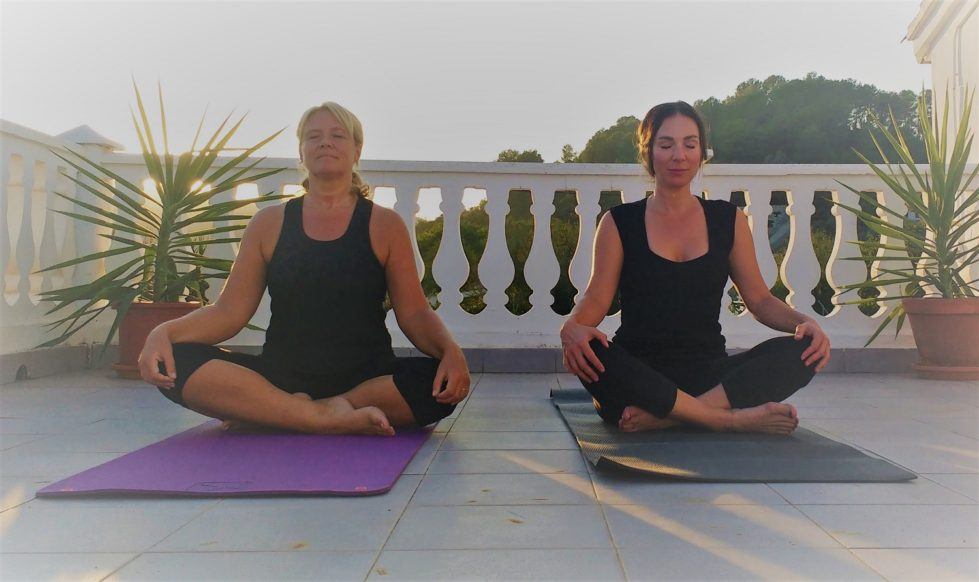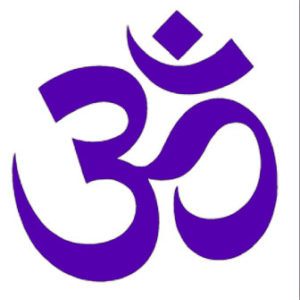
4 Ways you Can Practice and Benefit from Yoga without Getting Up!
In my attempts to encourage people to take up Yoga, I hear so many crazy excuses as to why they (think they) can’t, from “I can’t sit on the floor” to “I haven’t got time” to “My shoulder/knee/back/foot hurts” to simply and, more honestly, “I can’t be bothered.” Well, today, I’m here to tell you that you can STILL practice Yoga despite all of the above excuses! And, of course, these 4 ways are ideal for anyone chair bound to still enjoy some benefits of Yoga.
According to the Sacred Yoga Sutras of Patanjali, there are 8 limbs to Yoga and the physical postures, known as “Asanas” are only one of the 8 limbs. So, I’ve picked (or adapted) some of the other 7 limbs for you to try. Can I point out too, please, that they can all be done anywhere and everywhere – so no excuses!
As Yoga is essentially a preparation for meditation, the “limbs” begin with preparing ourselves in some way and then our surroundings and then they focus on the physical body (asanas) and later moving into the breath (pranayama) and then the last few limbs relate to the different stages of meditation and connection. For any experienced Yogis out there, I apologise for the simplification I am about to provide but my aim here is to show those new to the practice how we can easily benefit from other aspects of Yoga practice.
1. Yama
Yama is the first limb and is broken down into 5 smaller sections, which basically relate to being a good person. So the first way is, in fact, 5 ways! The first being Ahimsa which is the practicing of non-violence. Sounds easy, eh? I’m sure you are not physically violent in nature but it also refers to our thoughts and not just our deeds – and beating yourself up with your inner talk is definitely not Ahimsa. So back to those positive affirmations about self love here – to help you avoid any negative thoughts about yourself or others.
Other Yamas include Satya which is about being honest with yourself and others and Asteya which translates as non-stealing. When we think of stealing we easily relate the word to possessions and money but it can mean so much more than that. Bullies steal the confidence and self esteem of their victims, chronic complainers steal energy from their listeners, manipulators take what is not readily given to them.

If you take something which is not willingly given to you, then you are not practicing Asteya.
Brahmacharya is usually translated as continence meaning to “hold in” and relates to conserving your energy (in all its forms) and only directing it where it is needed to go. It includes self-control and also not wasting time and effort. The last Yama is Aparigraha which translates as non-covetness and relates to not being greedy and taking only what you need at that time.
On reflection, to fully live by these Yamas is not as easy as it initially sounds but just making progress in these 5 areas of life can make a huge difference to our health and happiness. After all, it’s all about the energy – and everything is energy, right?
2. Niyama
This is the second limb of Yoga and also breaks down into 5 sections but, don’t worry, we’re not going to go through all of them. I am only focusing on the areas of Yoga you can practice when it’s too hot to do anything else or you are feeling too lazy to do anything else! So I am just picking the fourth Niyama today which is Svadhyaya. Svadhyaya refers to studying scriptures and self study but can be related to everyday life as reading/listening to inspiring words and writing some sort of journal or gratitude list. There’s plenty on the internet these days to inspire us so just set the intention to be inspired and start surfing!
Writing freely is also a great way to release “stuff” and gratitude lists are an excellent way to help us see what we have and what we desire and basically where we’re at (self-study). Reading back over these journals is a great way to acknowledge your progress especially on those days when you need a little extra encouragement.
3. Pranayama
This is the breathing limb! Prana is often translated simply as “breath” but it is SO much more than that so I prefer to use the term “life force energy”. The word yama translates as control or technique so together pranayama relates to the control and techniques used in breathing in the life force energy. There are so many different techniques to help us focus on inhaling prana (breathing) but, don’t worry, I’ll just include my favourites here.
Ujjayi
This is the deep breath, often accompanied by a raspy sound from the back of the throat, which concentrates on taking the breath all the way down to the belly and allowing the belly to comfortably expand with the inhale and relax with the exhale.
Most people when taking a deep breath sub consciously hold their bellies in and extend their chests. Try it and see if you do the same. This subconscious act deprives the lower abdomen of receiving its full quota of vital life force energy. By allowing the breath to come all the way down and by not worrying about the belly expanding as far as it naturally wants to you can really nourish this lower abdominal area (sacral chakra). This is particularly healing for any digestive or gynaecological problems. Try it and see – let me know how you get on with it.
Nadi-Shodhana
This is one of my favourites and works with balancing the right and left sides of the body by balancing the prana flow through the right and then left nostrils in turn. Block one nostril and inhale slowly (allowing the belly to expand), hold for a second or two, and then block that nostril, unblock the other nostril and exhale slowly. Inhale again through the same nostril that you just exhaled from and hold for a second or two before exhaling out of the other nostril. Repeat for as long as is comfortable for you.
This balances our feminine and masculine energies, our ida and pingala, our yin and yang – whatever language you prefer! By the way, this practice is excellent for easing menstrual and menopausal symptoms!
Kapalabhati – often called fire breath.
This technique takes some practice but is so worth it. We focus on our exhale and almost force the breath out using our abdominal muscles to ensure we have exhaled completely. Allow the inhalation to happen naturally before focusing on the next exhale. With practice you can get faster with this breathing pattern and it’s super energising!
4. Meditation
As stated earlier, the last 4 “limbs” of Yoga all relate to Meditation or the preparation of meditation. Pratyahara refers to the withdrawal of our senses as we begin to focus within. This is the aspect of Yoga that allows monks to meditate for days on end without moving, eating or drinking. It focuses on detaching from the physical body and therefore the physical senses. Needless to say it would take a life time or two to master this one.
On our Yoga teacher training course, we practiced Yoga a few times in the park with an army of flies that were determined to distract us – they gave us the perfect opportunity to practice our pratyahara. The deeper into meditation we went the less these flies could bother us!
Dharana refers to the concentraion stage of the process and Dhyana is the actual meditation before you get to Samadhi which Google translates as “a state of intense concentration achieved through meditation. In yoga this is regarded as the final stage, at which union with the divine is reached (before or at death).” This is where most of us struggle with our Yoga practice so let’s bring it back to a level we can all relate to.
For those of you who read my first book Heal yourself to Happiness, you will know I dedicated a whole section to the topic of meditation. Meditation simplified, in my opinion, just means putting your conscious mind to one side for a while and letting the subconscious come to the fore. We do this naturally without thinking so many times during the day yet we don’t realise this is the beginning of meditating.
Do you ever “drift off” in thought while driving a familiar route alone? Or while doing the dishes? It’s like day dreaming. That moment just before you fall asleep or that moment you awaken. We often experience this relaxation of the conscious mind during exercise, painting, doing crafts, puzzles, gardening, cooking……….in fact, usually when we’re doing something we love that we find relaxing. That is the feeling we want to create which is why it’s so important to spend time relaxing and doing the things you love.
If you can nurture this feeling and deepen it then you’re well on your way to meditating. This is when you get all your bright ideas, creativity, inspiration, intuition and guidance for this is when your spirit guides can communicate with you more clearly. This is why meditating is so healing because it gives you the answers you need through your own intuition. Your own inner guidance system. Perfect!
So there you have it. Four ways you can practice Yoga without even getting up! Let me know how you get on.
Love and Blessings
xx
